| Table 1: | Temperature vs Resistance |
| Table 2: | Temperature vs Resistance |
A/C Pressure Sensor

The air conditioning (A/C) pressure sensor is located in the A/C high side pressure refrigerant line in front of the air box. The pressure sensor is a transducer that varies resistance according to changes in high side refrigerant pressure. The PCM measures the signal voltage from the A/C pressure sensor, which is a reduced value of the PCM 5-volt reference. The maximum voltage ranges of the sensor are around 0.1 volts at 0 psi to 4.9 volts at 459 psi. The sensor input is used primarily by the PCM to determine when and what speed to turn the cooling fans On. It is also used to turn Off the A/C relay if the system pressure is not within 180 - 2999 kPa (26-435) psi. The sensor input also aids in determining idle air control (IAC) position for idle speed during A/C operation.
Air Pump
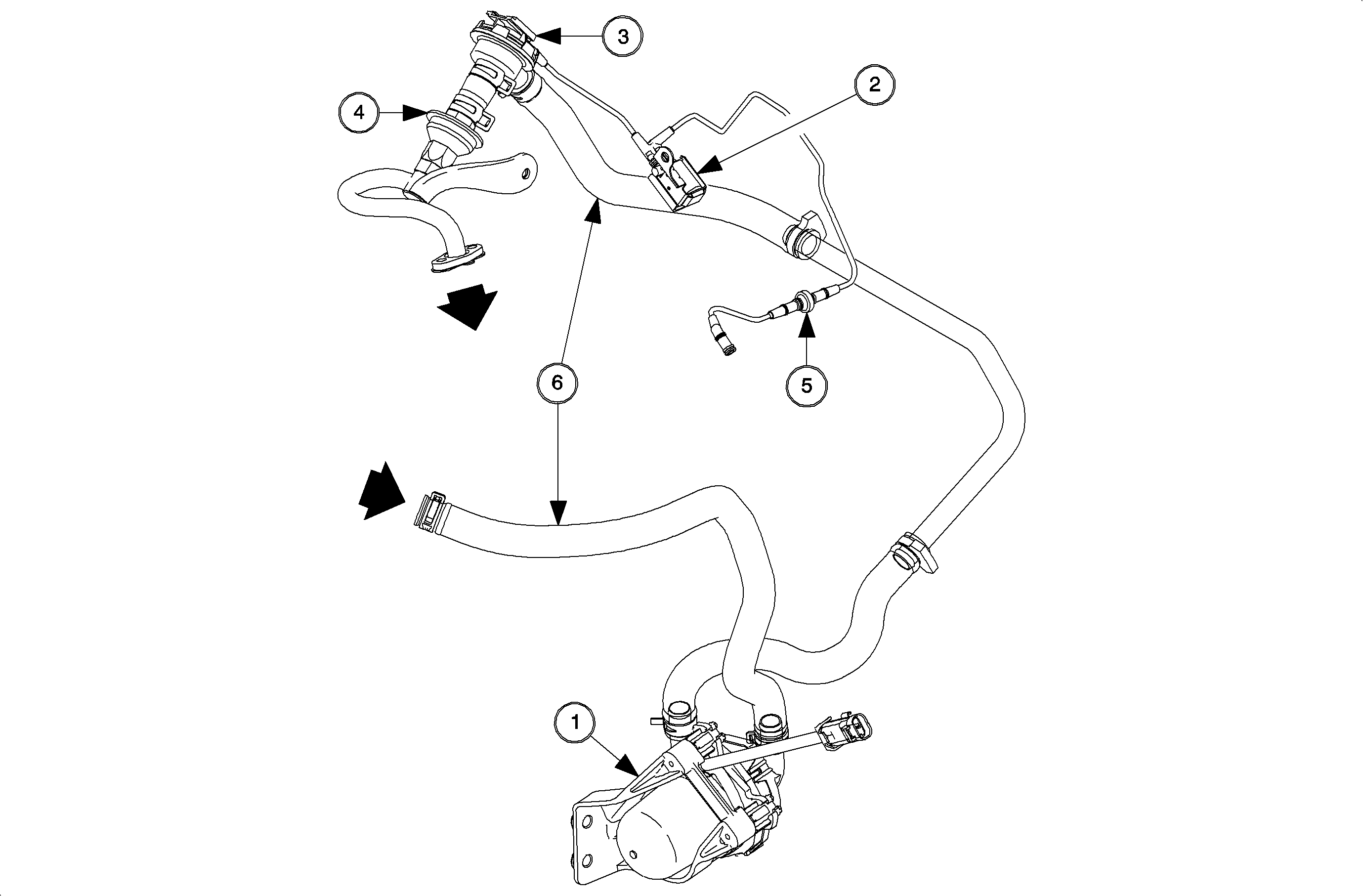
The air pump is located underhood, underneath the intake manifold near the starter motor. The air pump is the main component of the AIR system for California emission level vehicles only. The purpose of the AIR system is to inject air into the exhaust manifold to quickly increase the temperature of the catalytic converter. The air pump creates the pressure needed to inject air into the exhaust manifold. The air pump is controlled by the PCM through the air pump relay in the underhood fuse block (UHFB).
Air Pump Solenoid
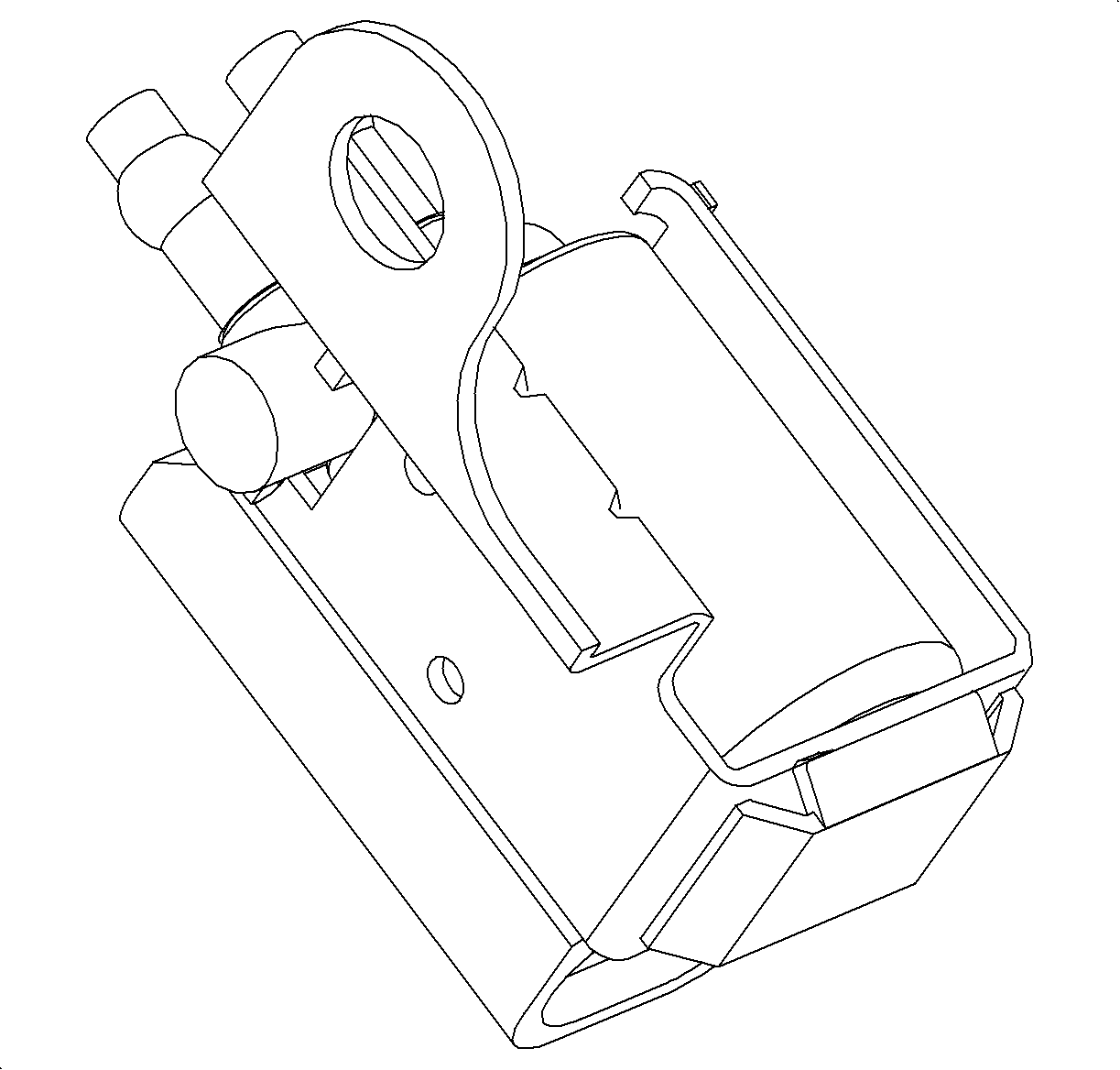
The air pump solenoid is located underhood on the left side of the engine near the engine coolant temperature sensor. The air pump solenoid is part of the AIR system and is used to control manifold vacuum to the shutoff valve. When the air pump solenoid is energized (PCM supplies ground), manifold vacuum will pull the shut off valve up and allow air from the air pump to flow past the check valve into the exhaust manifold.
Air Shutoff Valve
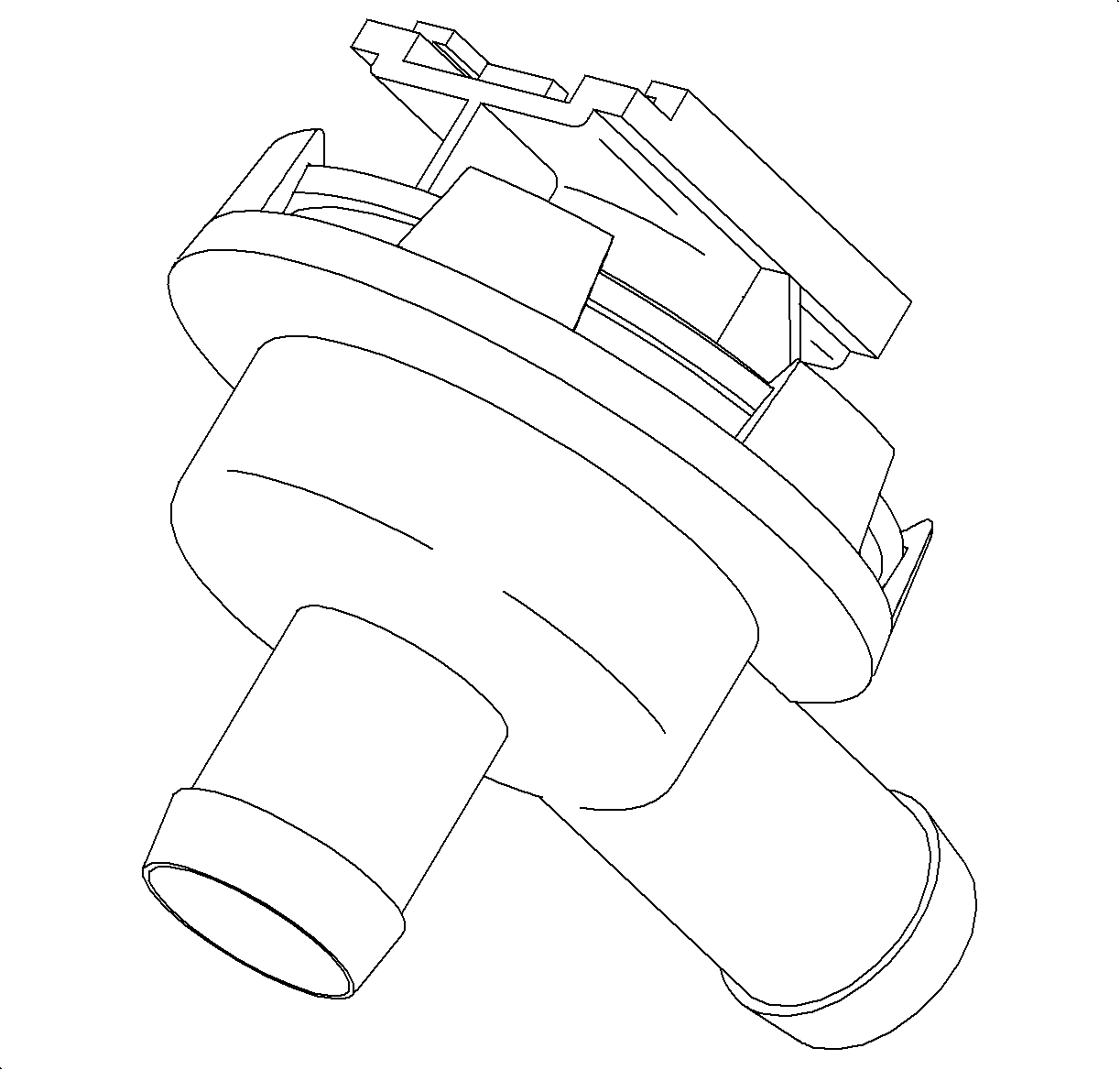
The shutoff valve is located underhood toward the left rear of the cylinder head. The shutoff valve is part of the AIR system used to control the airflow from the air pump to the exhaust manifold. The shutoff valve consists of a spring-loaded diaphragm opened by vacuum, which is regulated by the air pump solenoid.
Crankshaft Position (CKP) Sensor
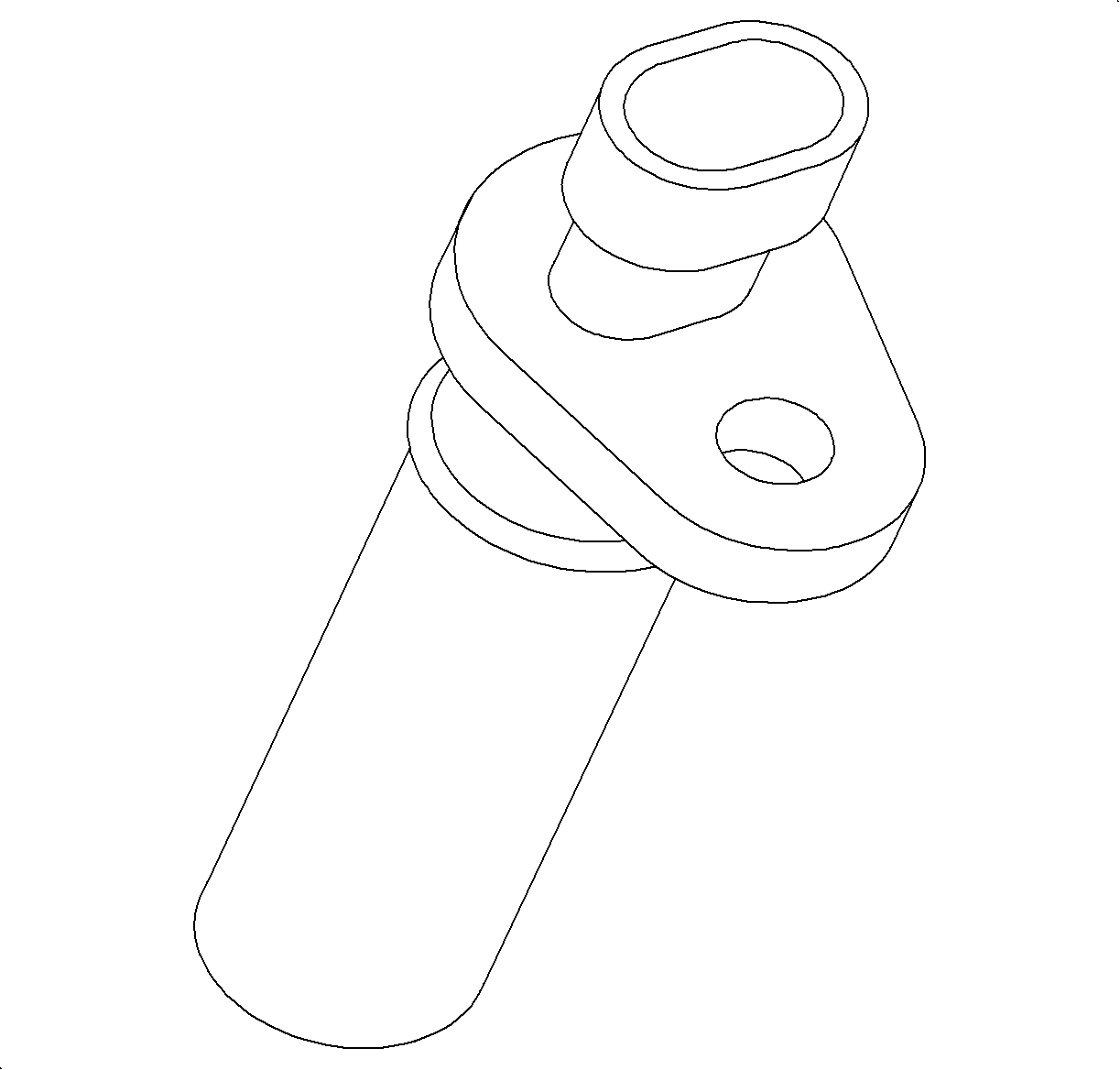
The CKP sensor is located in the front of the engine block near the starter motor. It produces an AC voltage of different amplitude (as high as 150 peak volts) and frequency depending on the velocity of the crankshaft. This A/C voltage is sent to the PCM. The crankshaft has 7 machined notches, 6 of which are spaced 60° apart. The remaining notch is 10° before the #4 cylinder top dead center (TDC) notch. The extra notch is used by the PCM to determine the position of the #4 cylinder which is necessary to synchronize engine position. The CKP sensor is used for fuel delivery, spark timing, misfire diagnostics and tachometer display.
Tachometer
The CKP sensor is used as an input for tachometer information. The CKP sensor sends the PCM module an A/C voltage signal. The PCM uses the A/C voltage signal from the CKP sensor to calculate RPM. The PCM sends an averaged tachometer message to the I/P cluster over the Class II link every 100 ms. The PCM averages the tachometer information to ensure smooth tachometer fluctuations.
UPSHIFT TELLTALE
On manual transaxle vehicles, the PCM optimizes fuel economy by informing the driver when the transaxle should be shifted to the next higher gear. The PCM bases its determination on engine speed, vehicle speed and engine load. When the PCM determines that the driver should shift to the next higher gear, it sends a message to the I/P cluster over the Class II link to turn On the Upshift telltale.
EI Module and Ignition Coil Housing
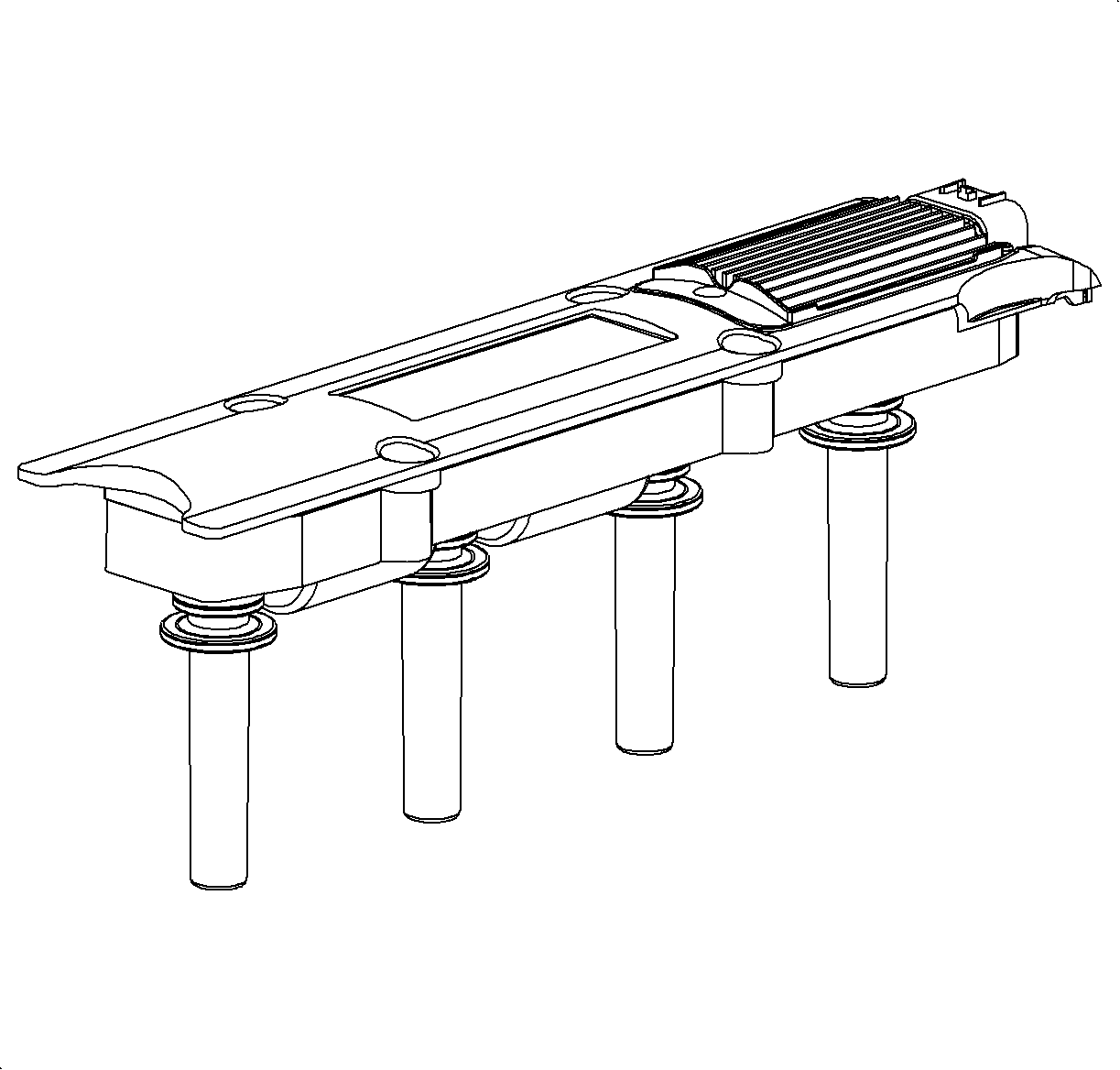
The EI module, ignition coil housing with coil packs and spark plug boots are bolted as an assembly to the top of the cam cover. The electronic ignition (EI) module charges and discharges the coils based on PCM control. The PCM uses a high control signal of near 5 volts to charge up the coil and a low control signal of near 0 volts to discharge the coil. If the coil is charged and the control signal is low, the coil will fire through its secondary towers. The PCM controls spark timing and dwell (spark On-time) under all engine running conditions.
The EI module also has the ability to determine when #1 and #3 cylinders have fired on compression by the use of compression sense ignition circuitry. This eliminates the need for a camshaft position sensor. The EI module sends a cam signal out to the PCM whenever it determines cylinders #1 or #3 has fired on its compression stroke. Refer to "Electronic Ignition" system description for further details.
Engine Coolant Temperature (ECT) Sensor
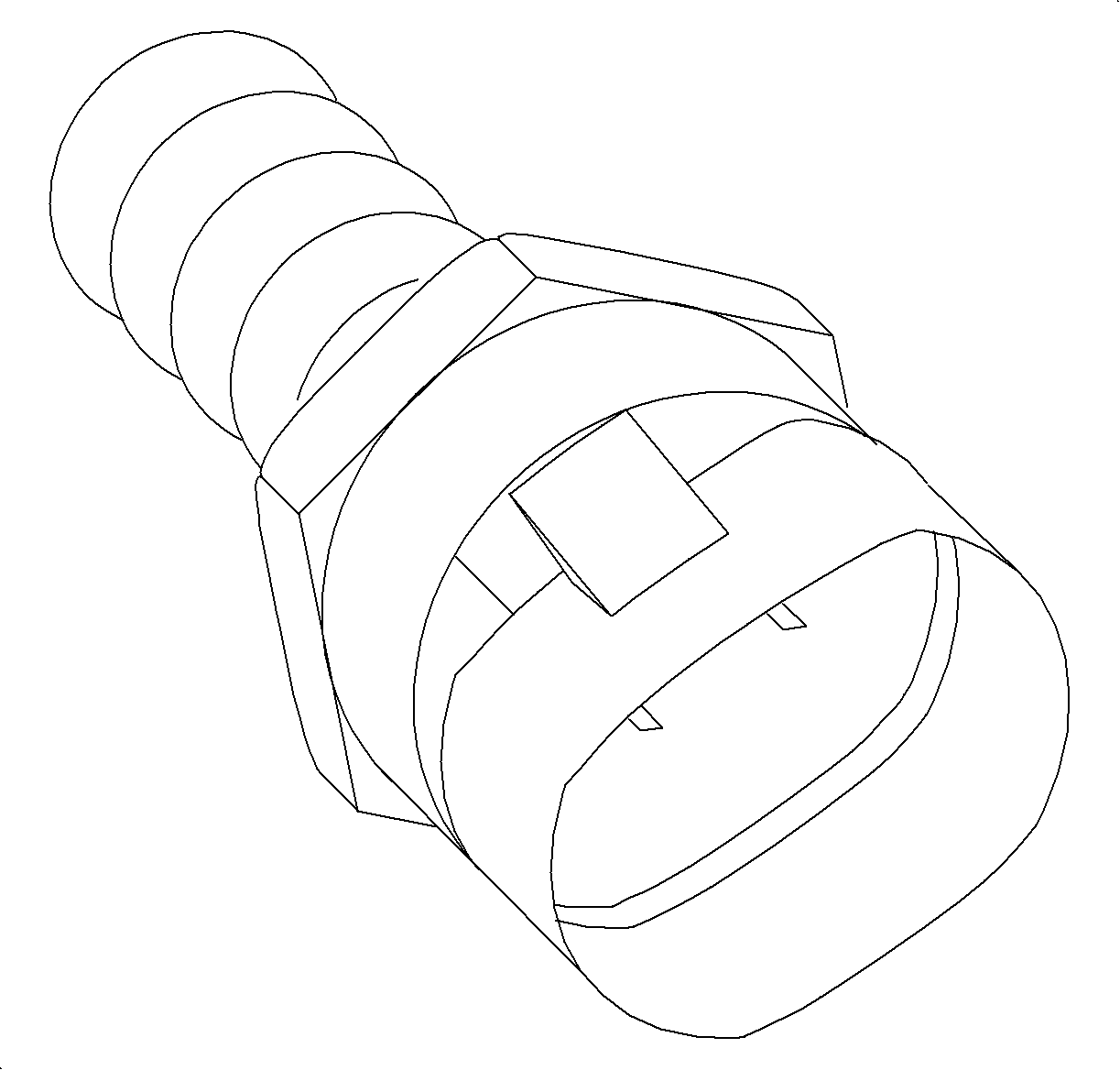
The ECT sensor is located in a coolant passage in the side of the cylinder head near the thermostat housing. The ECT sensor is a two-wire thermistor type sensor that varies resistance according to changes in engine coolant temperature. The PCM supplies a five volt reference through a resistor to the sensor, which is connected to ground. When the sensor is cold it has high resistance (high signal voltage at PCM). As the sensor temperature increases, its resistance decreases (lower signal voltage at PCM). The PCM uses the signal voltage to determine engine coolant temperature.
°C | °F | OHMS |
|---|---|---|
Temperature vs Resistance Values (Approximate) | ||
100° | 212° | 177 |
90° | 194° | 241 |
80° | 176° | 332 |
70° | 158° | 467 |
60° | 140° | 667 |
50° | 122° | 973 |
45° | 113° | 1188 |
40° | 104° | 1459 |
35° | 95° | 1802 |
30° | 86° | 2238 |
25° | 77° | 2796 |
20° | 68° | 3520 |
15° | 59° | 4450 |
10° | 50° | 5670 |
5° | 41° | 7280 |
0° | 32° | 9420 |
-5° | 23° | 12,300 |
-10° | 14° | 16,180 |
-15° | 5° | 21,450 |
-20° | -4° | 28,680 |
-30° | -22° | 52,700 |
-40° | -40° | 100,700 |
The ECT sensor is used by the PCM for fuel control (calculation of temperature of air/fuel mixture at the intake valve in conjunction with the IAT sensor temperature), Coolant Temperature telltale illumination, coolant temperature gauge position and cooling fan operation (fan control 1 and 2 logic signals to the cooling fan control module). The PCM also uses the ECT sensor for ignition timing, EVAP purge solenoid control, idle speed control and oil life monitoring.
COOLING FAN(S) MOTOR CONTROL
The PCM controls both cooling fan motors at all times by independently grounding two logic circuits (fan control 1 and fan control 2) to the cooling fan control module. When the PCM is not grounding a fan control circuit, the cooling fan control module will detect a high voltage state (battery voltage). When the PCM is grounding a fan control circuit, the cooling fan control module will detect a low voltage state (ground). The combination of these high/low voltage states at the cooling fan control module allows the PCM to command four different fan speeds: Off, low, medium and high.
The PCM may ground fan control 1 and/or fan control 2 based on the reading from the ECT sensor. Under normal operating conditions, both cooling fans operate on low speed whenever the ECT is greater than 99°C (210°F), on medium speed if the ECT is greater than 102°C (216°F) and on high speed if the ECT is greater than 105°C (221°F). The cooling fans will turn Off when the temperature drops below 95°C (203°F). If the engine is turned Off and the ECT is above 105°C (221°F), the cooling fans will run on low speed for 7 minutes regardless of how fast the ECT cools down. If the engine is turned Off and the ECT is above 110°C (230°F), the cooling fans will run on low speed for 8.5 minutes regardless of how fast the ECT cools down. If a low/high ECT sensor circuit fault (DTC P0117 or P0118) is set, the PCM will command the cooling fan control module to run the fans on high speed to protect the engine and transaxle until the condition is corrected. The PCM also runs the cooling fans based on A/C high side pressure. Refer to the HVAC service manual for a cooling fan logic description on fan speed vs. A/C system pressure.
COOLANT TEMP GAUGE
The PCM controls the coolant temperature gauge by sending gauge position messages to the BCM over the Class II link based on ECT sensor readings. The BCM averages the temperature over time allowing the gauge to move slowly and remain in a relatively stable position as temperature varies. The BCM then sends the averaged information to the I/P cluster over the link to position the gauge.
COOLANT TEMPERATURE TELLTALE
The Coolant Temperature telltale is used to alert the driver that the engine may be in an overheated condition. The PCM controls the Coolant Temperature telltale by sending a message to the BCM, which sends a message to the I/P cluster over the Class II link to turn On the telltale. The PCM will send the message when the ECT sensor reading is above 118°C (244°F). If this condition exists, the PCM will set DTC P0217. If a high temp/low voltage fault exists in the ECT sensor circuit, the signal is considered invalid and the Coolant Temperature telltale will NOT be illuminated. The cooling fans will be commanded On high.
Engine Oil Pressure (EOP) Switch
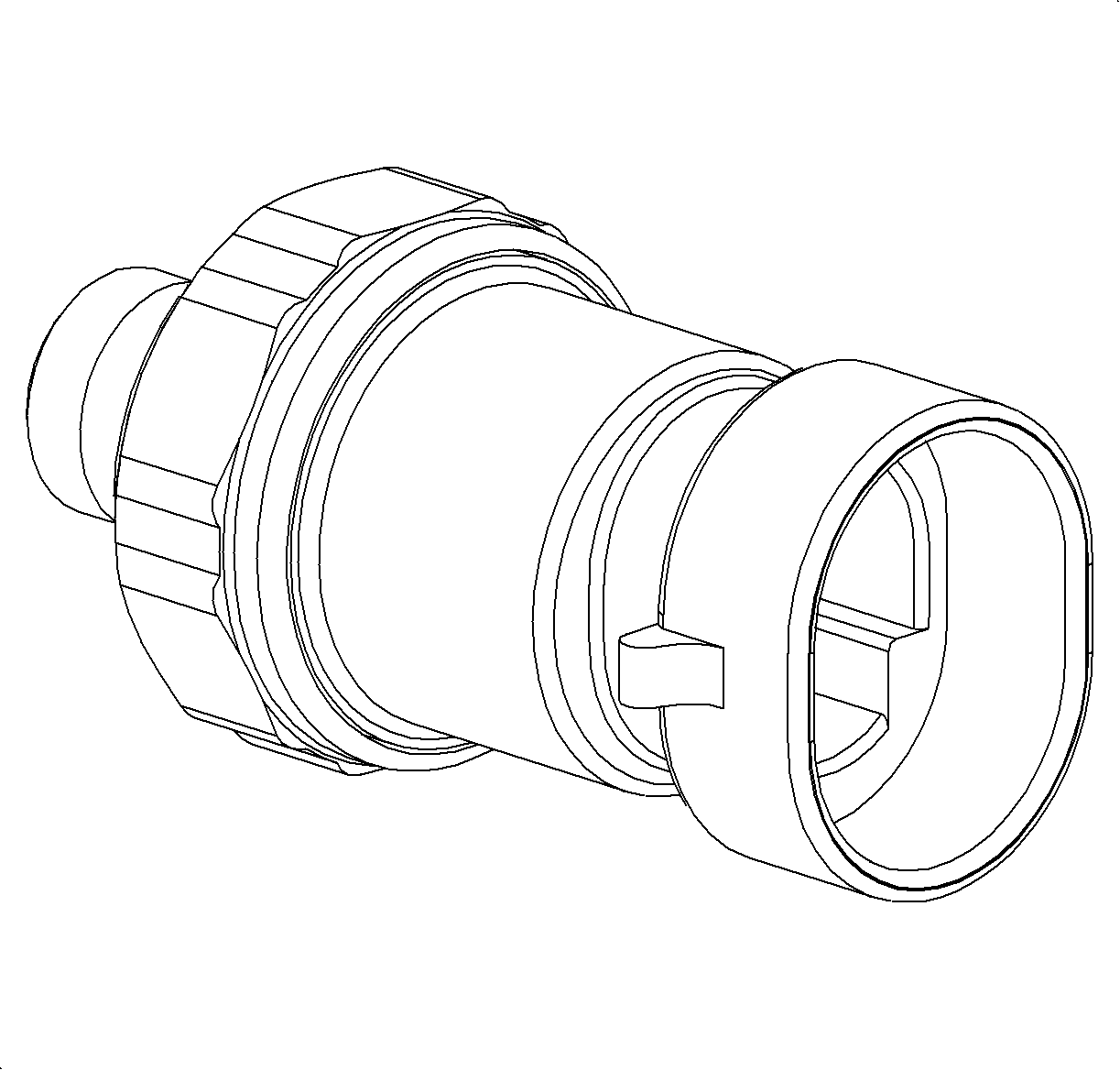
The engine oil pressure (EOP) switch is located in the front of the engine block near the starter motor. The EOP switch is a normally closed switch that opens when engine oil pressure exceeds 3.6 +/- 2.2 psi. The PCM supplies ignition voltage through a resistor to the EOP switch. With ignition On, engine Off, the PCM EOP input will be low (near 0 volts, switch closed). When the engine is started, and engine oil pressure exceeds 3.6 +/- 2.2 psi, the switch opens and the PCM EOP input goes high (ignition voltage).
OIL PRESSURE TELLTALE
The PCM sends a message to the I/P cluster over the Class II link to turn On the Oil Pressure telltale whenever the ignition is On and the EOP input at the PCM is low.
Evaporative Emission (EVAP) Purge Solenoid
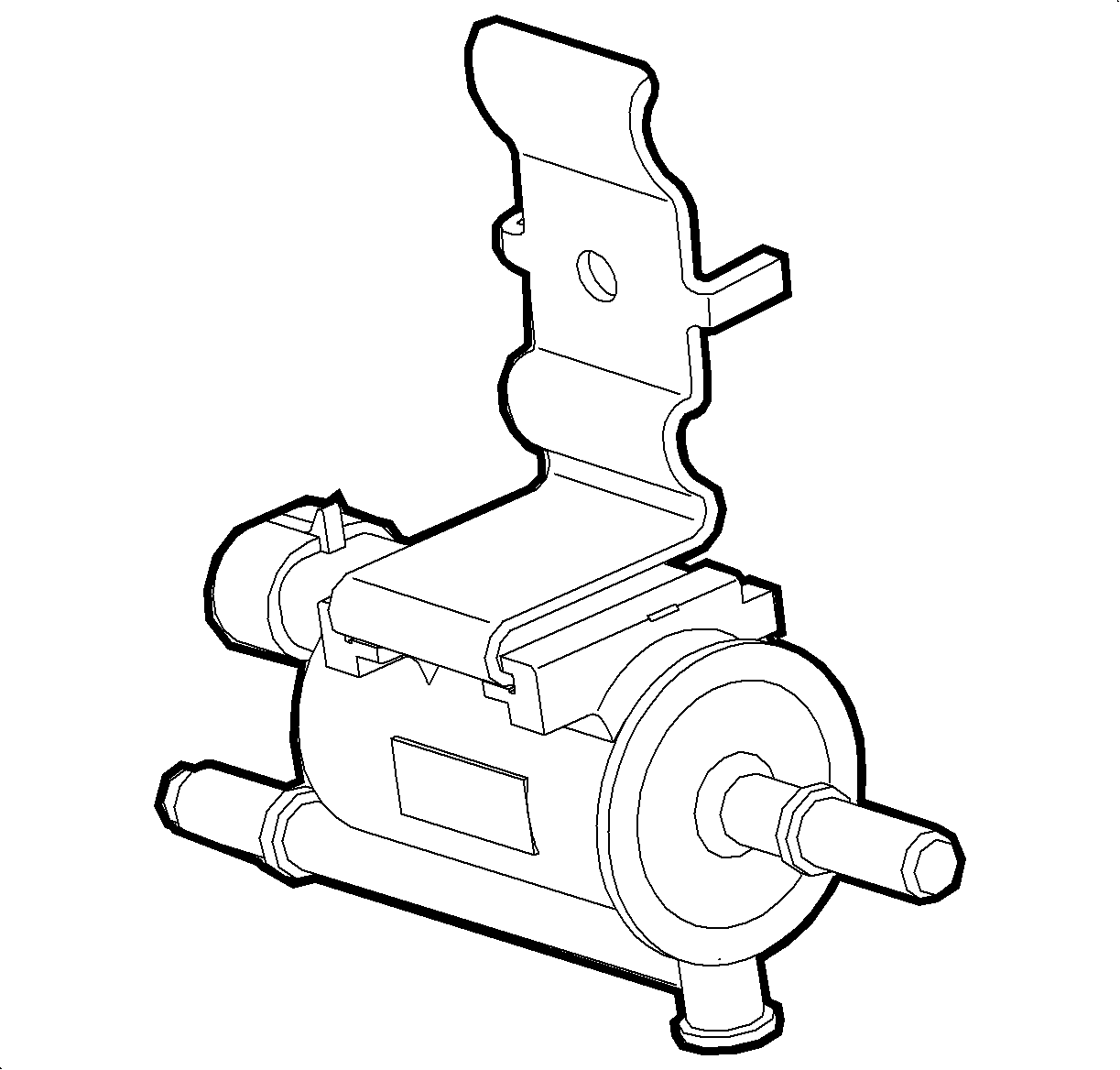
The EVAP purge solenoid is located in the engine compartment attached to the right side of the cylinder head. The EVAP purge solenoid controls the flow of fuel vapors from the EVAP canister to the intake manifold in conjunction with its ported vacuum supply. The PCM controls the EVAP purge solenoid by grounding the solenoid circuit. The EVAP purge solenoid is commanded On (PWM) when the EVAP system is in purge mode. Fuel vapors can be purged anytime the PCM is in closed loop and the vehicle is not decelerating.
Evaporative Emission (EVAP) Service Port
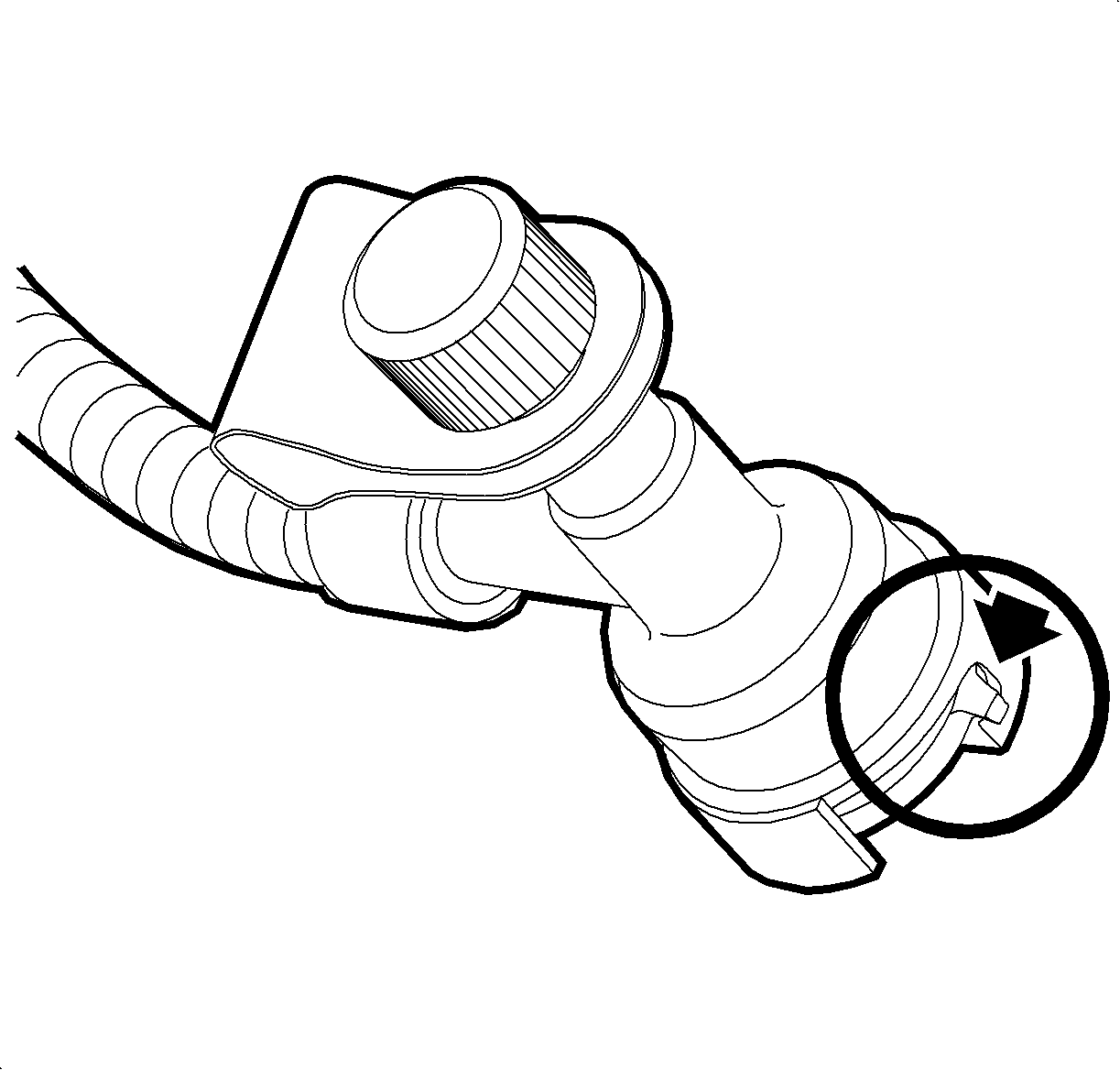
The EVAP service port is located in the EVAP purge line under the hood near the EVAP purge solenoid. The service port is identified by a green colored cap. The port is between the EVAP purge solenoid and the EVAP canister. The port contains a shrader valve to allow the connection of the service tool kit, Enhanced EVAP Pressure Purge Diagnostic Cart J41413.
Evaporative Emission (EVAP) Vent Solenoid

The EVAP vent solenoid is located toward the top of the fuel filler neck tube. The sole function of the EVAP vent solenoid is for EVAP leak diagnostics. Outside air flows around the normally open valve (except during portions of the EVAP diagnostics) through the EVAP canister to the fuel tank. This allows the fuel tank to be at atmospheric pressure (no vacuum). The PCM controls the EVAP vent solenoid by grounding the solenoid circuit (closes valve).
Fuel Injector
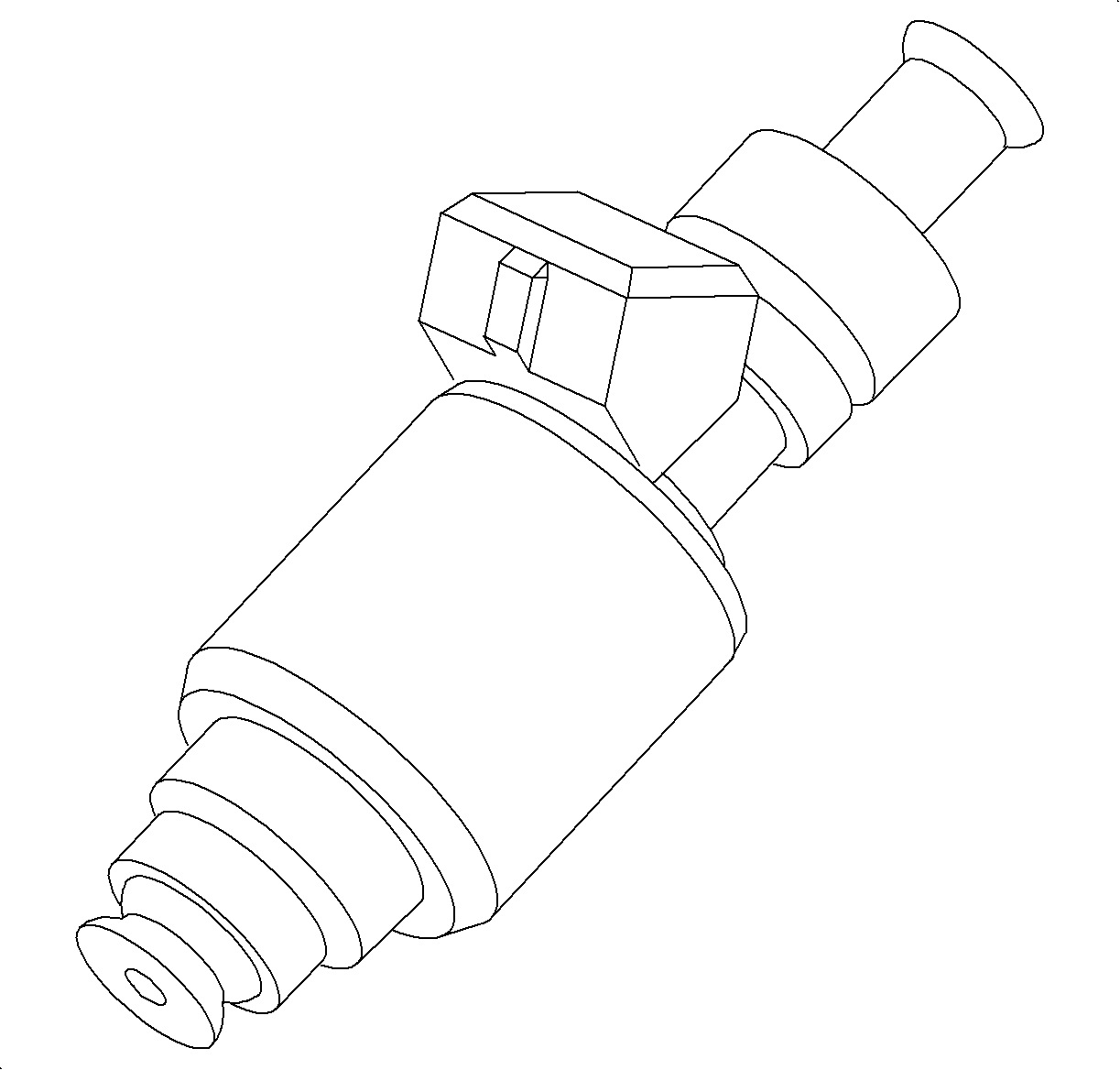
The fuel injection system on the DOHC 2.2L engine utilizes sequential fuel injection in which the PCM independently controls each fuel injector. The PCM grounds each fuel injector circuit for a certain length of time based on engine operating parameters. The fuel control system is designed to maintain a 14.7 to 1 air/fuel ratio under all engine running conditions except power enrichment (heavy acceleration/heavy engine load), deceleration and cold engine startup. The PCM can turn fuel injectors Off during deceleration, misfire diagnostics and traction control.
Fuel Pump
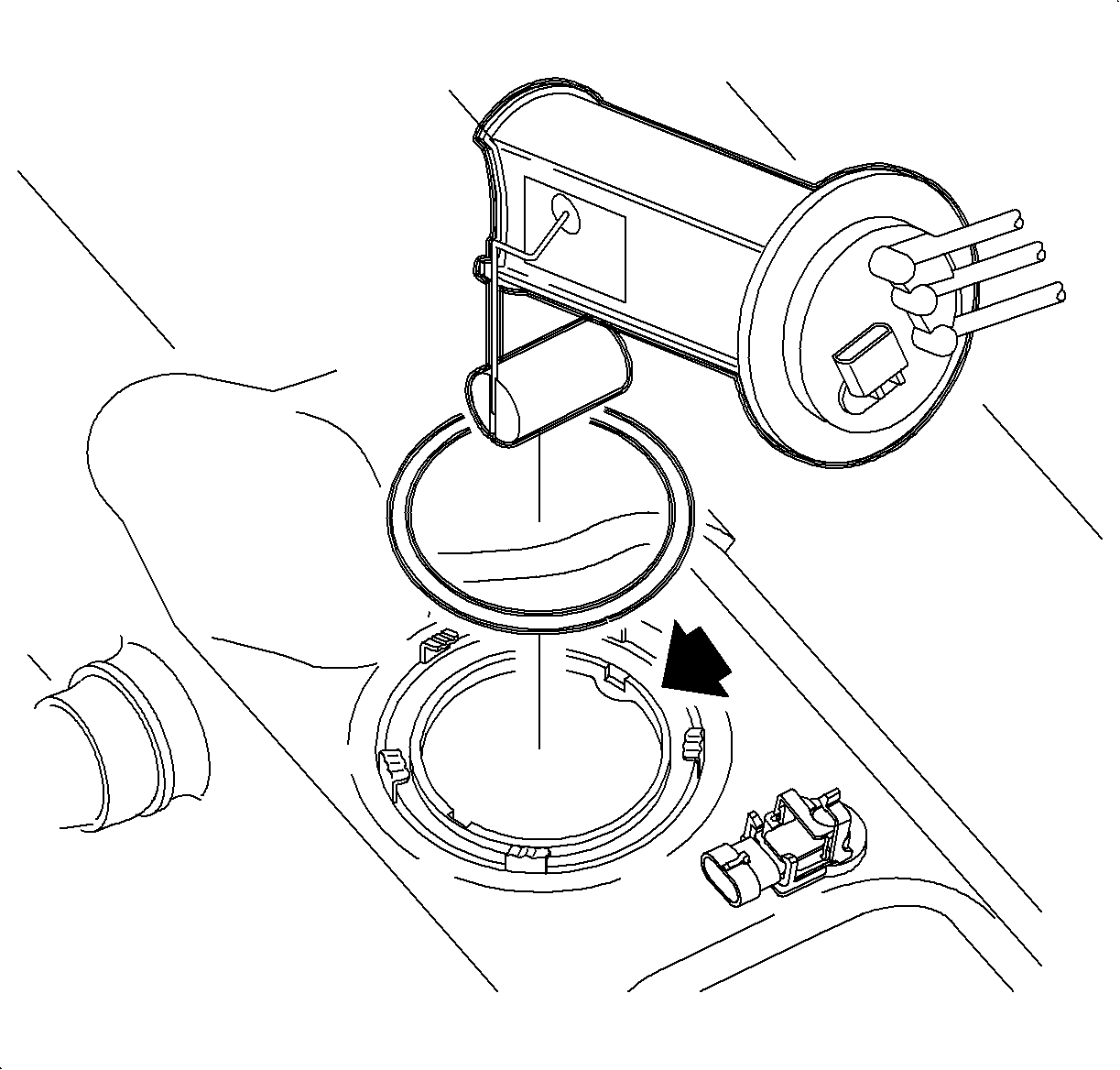
The fuel pump motor, located inside the fuel tank, supplies fuel pressure to the fuel injectors. The PCM controls the fuel pump motor by controlling the fuel pump relay in the left instrument panel fuse block (LIPFB). The fuel pump motor is supplied constant ignition voltage whenever the fuel pump relay is turned On. The PCM turns On the fuel pump relay whenever the engine is running or for 2 seconds when the ignition is turned On and the engine is not running.
Fuel Level Sensor
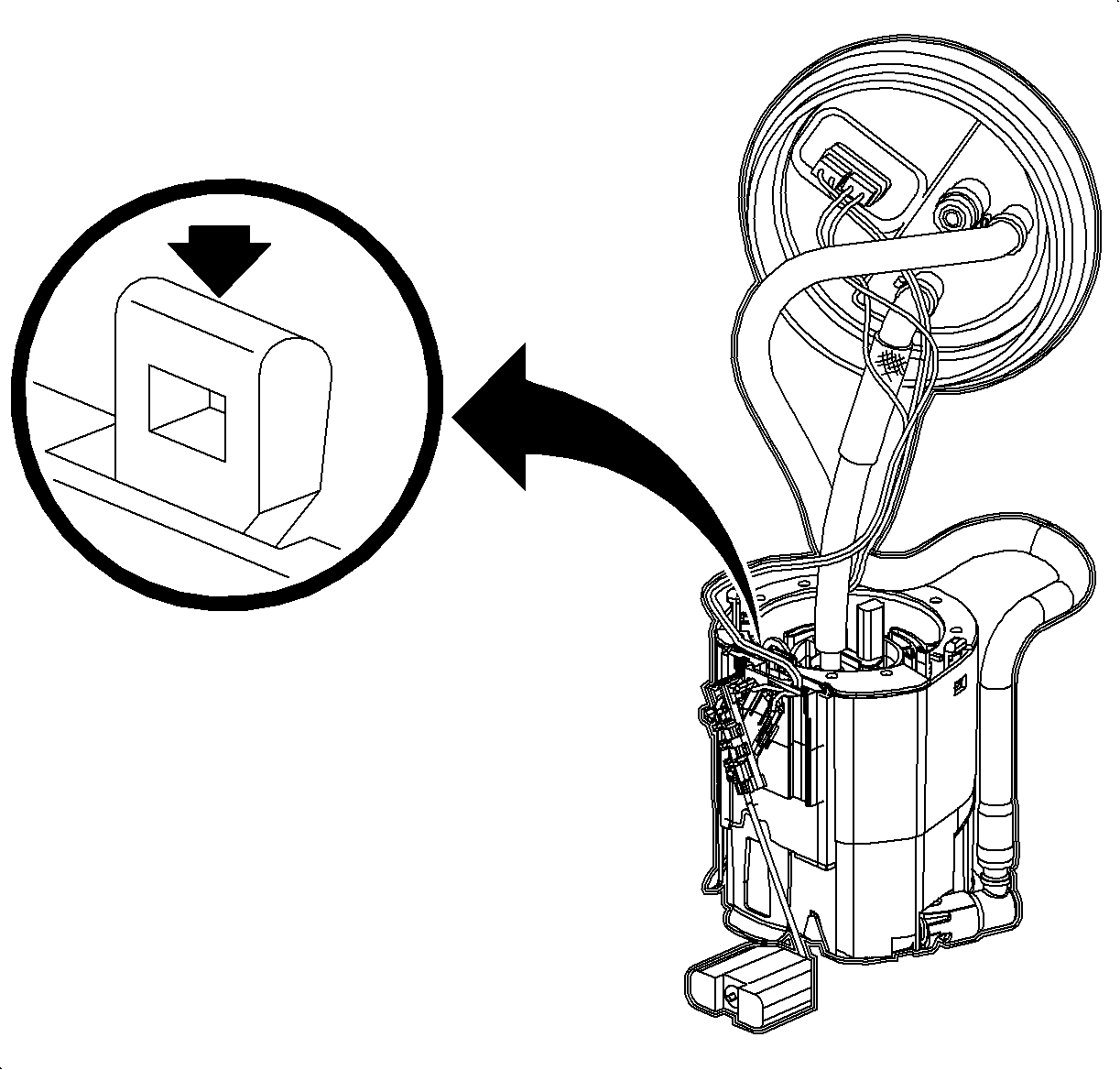
The fuel level sensor is part of the fuel tank sender assembly inside the fuel tank. This sensor varies resistance according to changes in the level of fuel in the fuel tank. The PCM supplies a 5 volt reference to the sensor, which is connected to ground. When the level in the fuel tank is low, the sensor resistance is high (high voltage on signal line). As the fuel level increases, the sensor resistance decreases (voltage decreases on the signal line). The PCM uses the signal voltage to determine fuel tank level. The fuel level sensor is also used to determine fuel level necessary for EVAP diagnostics.
FUEL GAUGE
The PCM averages the fuel tank level reading from the fuel level sensor over time and will also average the value if a circuit fault were to occur. The PCM sends this averaged information to the BCM over the Class II link. The BCM averages the information for fuel tank sloshing (vehicle speed) and sends this averaged fuel level to the I/P cluster over the link. The I/P cluster then positions the gauge.
LOW FUEL TELLTALE
If the fuel level is low, the PCM will send a message to the BCM, which sends a message to the I/P cluster over the Class II link to turn On the Low Fuel telltale. The Low Fuel telltale will illuminate when approximately 3.8 - 5.7 liters (1 - 1.5 gallons) of usable fuel remains in the tank. Fuel level on Scan tool will read below 11%.
Fuel Tank Pressure Sensor
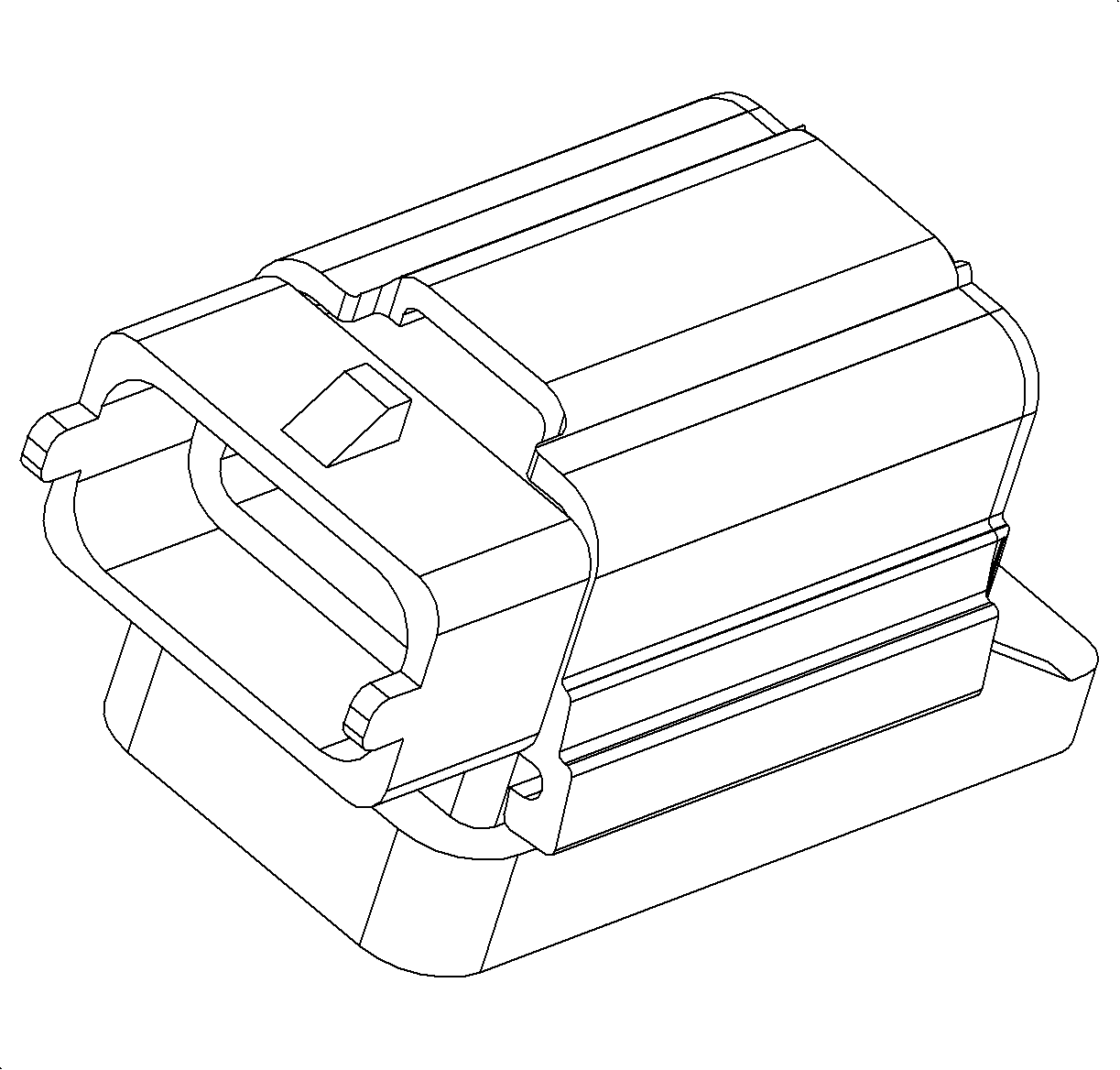
The fuel tank pressure sensor is located on top of the fuel tank. The function of the fuel tank pressure sensor is solely for EVAP leak diagnostics. The fuel tank pressure sensor is a transducer that varies resistance according to the difference in pressure between the fuel vapor inside the fuel tank and the outside air. The PCM measures the signal voltage from the fuel tank pressure sensor, which is a reduced value of the PCM 5 volt reference. The signal voltage will read low when the fuel vapor pressure in the fuel tank is low (vacuum) and will increase as the fuel vapor pressure in the fuel tank increases.
Generator

The PCM controls generator charging by supplying 5 volts on the generator L-terminal circuit whenever the ignition is turned On or the engine is running. This control voltage is necessary for the generator to charge once the generator begins to spin. With the ignition On, engine Off, the generator will ground the generator L-terminal circuit through a resistor. When the engine is started and the generator begins to charge, the generator will open the circuit (still using the 5 volt control voltage) signaling to the PCM that the generator is charging.
The generator will pulse width modulate ignition voltage to the PCM on the generator F-terminal circuit which relays generator duty cycle or electrical load.
CHARGE TELLTALE
If the voltage at the PCM generator L-terminal is low or if the generator F-terminal duty cycle is too low when the engine is running, the PCM will send a message to the I/P cluster over the Class II link to turn On the Charge telltale.
Heated Oxygen Sensor 1 (HO2S-1)
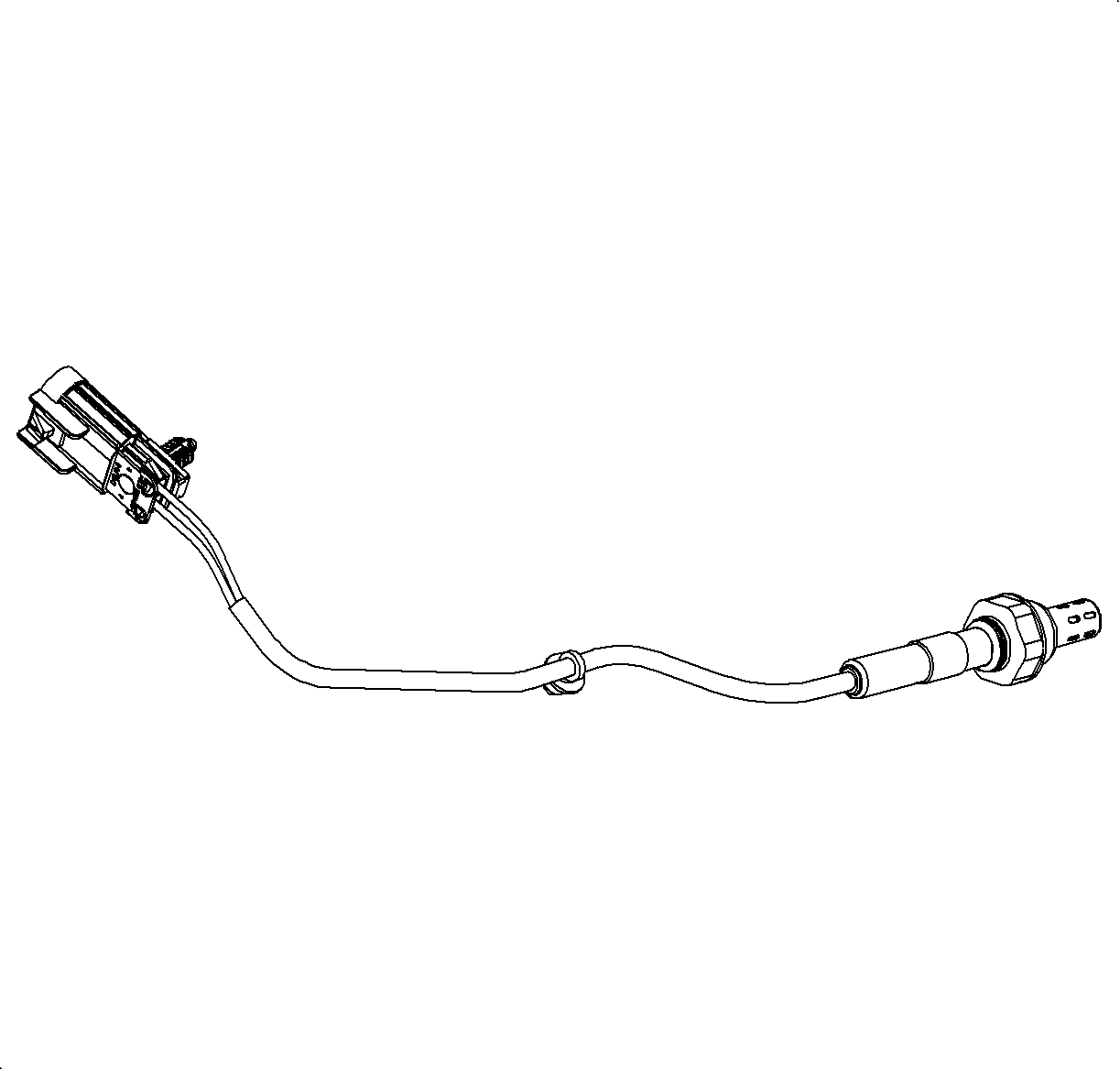
The HO2S-1 is located in the exhaust manifold used by the PCM to make fuel control corrections toward a 14.7 to 1 air/fuel ratio. The sensor is a four wire sensor. Two circuits are used for the heater and the other two are used for the oxygen sensor signal. The HO2S-1 is an electrical source that responds to oxygen content in the exhaust manifold. When the sensor reaches approximately 316°C (600°F), it produces a voltage based on the difference in oxygen between the atmosphere and exhaust gas. The PCM sends a bias voltage (399-499 mV) on the signal line, which can be read on the Scan tool when the sensor is cold. When the HO2S-1 is cold, it produces no voltage and has extremely high internal resistance. However, when the sensor heats up, it produces voltage that overrides the bias voltage. This voltage is read by the PCM to determine a rich/lean HO2S-1 signal used to adjust injector pulse width. Under normal conditions, low sensor voltage means high oxygen content/lean air-fuel mixture and vice versa. Normal sensor readings will fluctuate between 10 mV and 1065 mV.
Heated Oxygen Sensor 2 (HO2S-2)

The HO2S-2 is located behind the catalytic converter. The function of the sensor is to monitor the efficiency of the catalytic converter. The sensor is a four-wire sensor. Two circuits are used for the heater and the other two are used for the oxygen sensor signal. The H02S-2 is an electrical source that responds to oxygen content in the catalytic converter. When the sensor reaches approximately 316°C (600°F), it produces a voltage based on the difference in oxygen between the atmosphere and exhaust gas. The PCM sends a bias voltage (425-460 mV) on the signal line, which can be read on the Scan tool when the sensor is cold. When the HO2S-2 is cold, it produces no voltage and has extremely high internal resistance. However, when the sensor heats up, it produces voltage that overrides the bias voltage. This voltage in conjunction with the heated oxygen sensor 1 (HO2S-1) signal voltage is read by the PCM to determine the efficiency of the catalytic converter. Under normal conditions, low sensor voltage means high oxygen content/lean air-fuel mixture and vice versa. Normal sensor readings at steady cruise with a properly functioning catalytic converter will be steady around 500-800 mV.
Idle Air Control (IAC) Valve
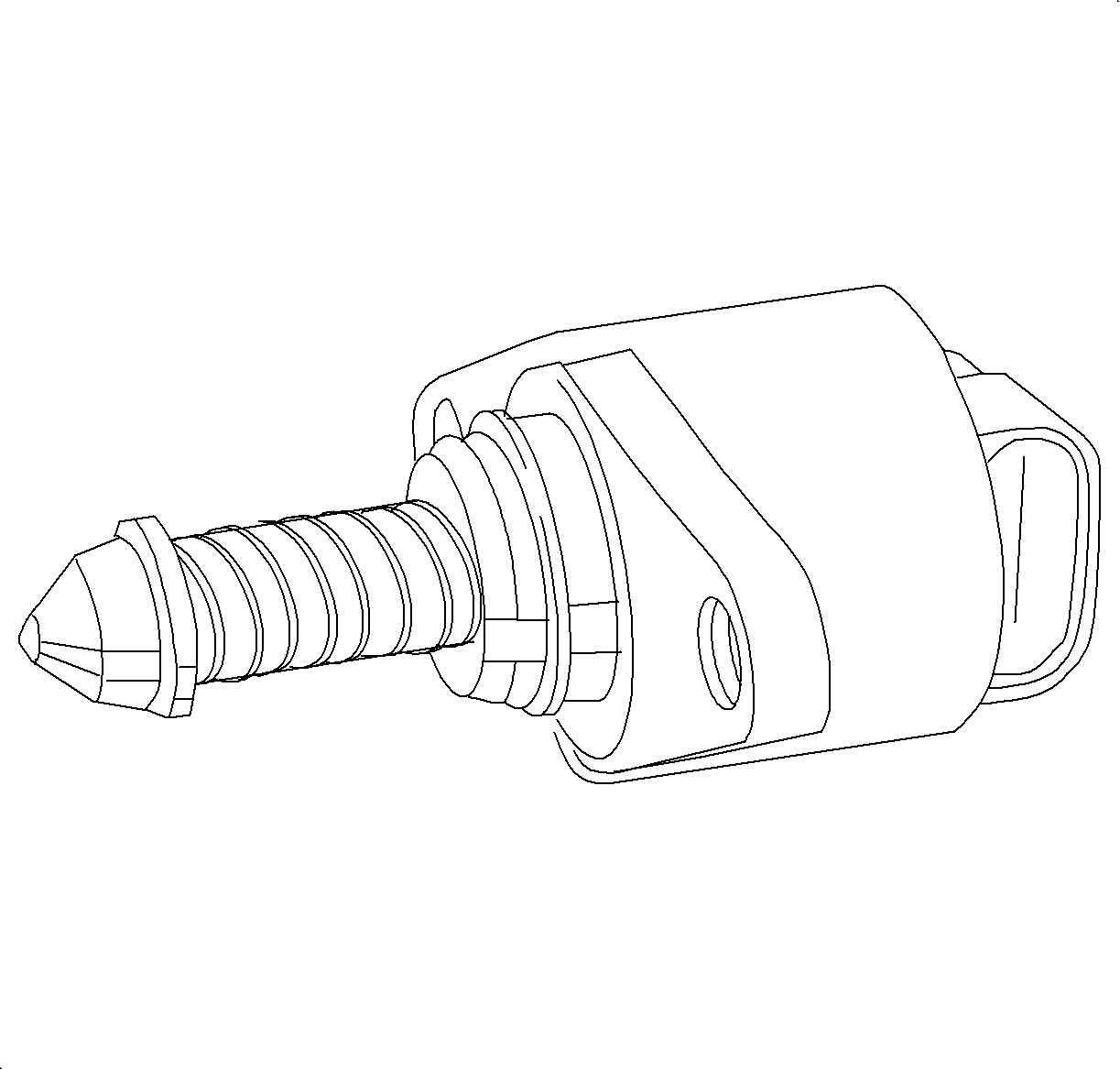
The IAC valve is located in the throttle body on the 2.2L L61 engine. The idle speed is controlled by the PCM using the IAC valve. The IAC valve consists of a two-coil stepper motor that moves a pintle valve in and out from the seat controlling the amount of air entering the intake manifold. The PCM controls the IAC valve by supplying ignition voltage or ground to any of the four circuits of coil A" or coil "B". When one circuit of a coil is supplied ignition voltage the other is supplied ground. Coil "A" and coil "B" are independent of each other, however both must be functional for the valve to move correctly in both directions. Retracting the IAC valve allows more air to flow into the intake manifold, which raises engine speed. Extending the IAC valve allows less air to flow into the intake manifold, lowering engine speed. The determination of how far the IAC valve is opened is based on engine speed, A/C relay command, ECT, TP angle, transaxle range switch position and transaxle shifting. Once the PCM learns the IAC position for A/C relay On and A/C relay Off, it can retard or advance ignition timing to finely adjust the idle speed without moving the IAC valve.
Intake Air Temperature (IAT) Sensor

The IAT sensor is located in the air induction tubing near the air box. The IAT sensor is a two wire thermistor type sensor that varies resistance according to changes in air induction temperature. The PCM supplies a five volt reference through a resistor to the sensor, which is connected to ground. When the sensor is cold it has high resistance (high signal voltage at PCM). As the sensor temperature increases, its resistance decreases (lower signal voltage at PCM). The PCM uses the signal voltage to determine intake air temperature.
°C | °F | OHMS |
|---|---|---|
Temperature vs Resistance Values (Approximate) | ||
100° | 212° | 177 |
90° | 194° | 241 |
80° | 176° | 332 |
70° | 158° | 467 |
60° | 140° | 667 |
50° | 122° | 973 |
45° | 113° | 1188 |
40° | 104° | 1459 |
35° | 95° | 1802 |
30° | 86° | 2238 |
25° | 77° | 2796 |
20° | 68° | 3520 |
15° | 59° | 4450 |
10° | 50° | 5670 |
5° | 41° | 7280 |
0° | 32° | 9420 |
-5° | 23° | 12,300 |
-10° | 14° | 16,180 |
-15° | 5° | 21,450 |
-20° | -4° | 28,680 |
-30° | -22° | 52,700 |
-40° | -40° | 100,700 |
The PCM uses the IAT sensor for fuel control (calculation of air/fuel mixture temperature at the intake valve in conjunction with the ECT sensor temperature), ignition timing and EVAP purge solenoid control.
Knock Sensor

The knock sensor is located in the front of the engine block near the starter motor. The knock sensor is a piezoelectric flat response (wide resonant band) device that produces an AC voltage of different amplitude and frequency based on engine mechanical vibration. The amplitude and frequency are dependent on the level of knock the sensor detects. The PCM learns an average noise level from the knock sensor (based on a calibrated average) and monitors the signal to verify that it stays above a minimum value. The knock sensor signal is only used during the top dead center combustion event of the firing cylinder. When in a combustion event, the PCM filters the knock signal and compares it to the normal calibration noise level for that RPM. If the PCM has determined that knock is present during the combustion event, it will retard timing on the next firing cylinders until the knock is eliminated. The PCM will always try to work back to a zero compensation level or no spark retard.
Manifold Absolute Pressure (MAP) Sensor
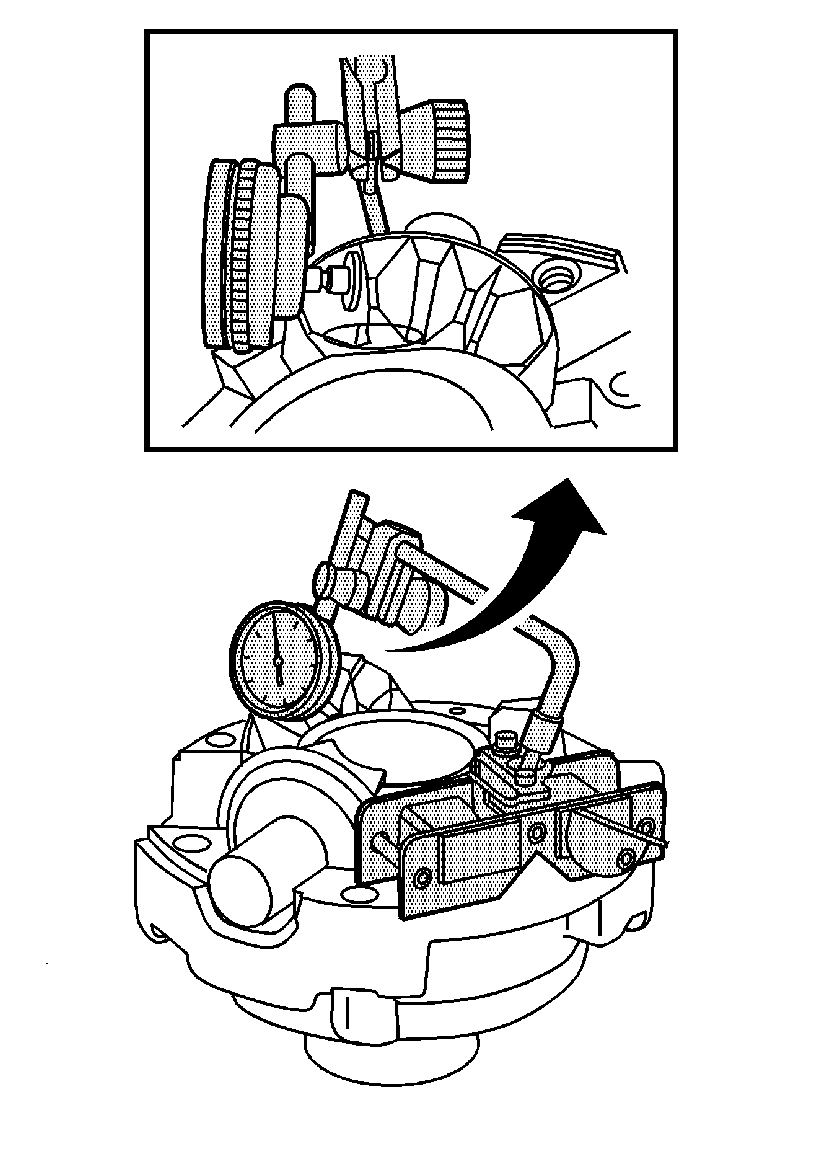
The MAP sensor is located in the intake manifold near the throttle body. The MAP sensor is a transducer that varies resistance according to changes in intake manifold pressure (vacuum). The PCM measures the signal voltage from the MAP sensor, which is a reduced value of the PCM 5 volt reference. The voltage ranges from 1.0-1.5 volts at idle (low pressure/high vacuum) to 4.5-4.8 volts at wide open throttle (high pressure/low vacuum).
The MAP sensor is primarily used for fuel control. Low intake manifold pressure indicates low engine RPM or low engine load. The higher the pressure in the intake manifold, the greater the load on the engine. The MAP sensor is also used for ignition timing and EVAP purge solenoid duty cycle.
Output Speed Sensor (OSS)

The OSS is attached to the transaxle case near the right side inner CV joint. The sensor is used in conjunction with a sensor rotor pressed into the final drive assembly. An air gap of 0.27-1.57 mm (0.011-0.062 in) exists between the sensor and rotor teeth. The OSS is a magnetic inductive pickup sensor, which uses a permanent magnetic surrounded by a coil of wire. As the differential rotates, an AC voltage is induced in the OSS signal wires. The OSS sensor produces this AC voltage of different amplitude (0.5 volts at 25 rpm to 200 volts at 1728 RPM) and frequency depending on the velocity of the output shaft. The OSS produces the signal from the 16 evenly spaced notches on the sensor rotor. The OSS produces a readable AC voltage signal when vehicle speed is above 5 km/h (3 mph). The OSS signal is sent to the PCM, which is used to determine the RPM of the output shaft. The output shaft rpm is then used for many engine emission control calculations, idle speed adjustment, transaxle shift points, shift timing, TCC apply/release, transaxle line pressure control, cruise control operation and I/P cluster speedometer readings.
ODOMETER
The OSS produces a maximum of 5000 readable pulses/mile between 5 and 161 km/h (3-120 mph), which are sent to the PCM to determine vehicle speed. The vehicle speed input is used to determine the miles the vehicle has traveled. The PCM reads the OSS signal and sends vehicle speed information to the BCM over the Class II link. The BCM in turn calculates the distance traveled and sends the information to the I/P cluster over the link. The I/P cluster increments the electronic odometer accordingly.
SPEEDOMETER
The OSS voltage pulses are sent to the PCM to determine vehicle speed. The PCM sends the vehicle speed information to the BCM over the Class II link. The BCM averages the vehicle speed calculations over time then sends the information to the I/P cluster over the link every 100 ms.
Averaging the information allows the speedometer to obtain smooth speedometer needle fluctuations.
Powertrain Control Module (PCM)
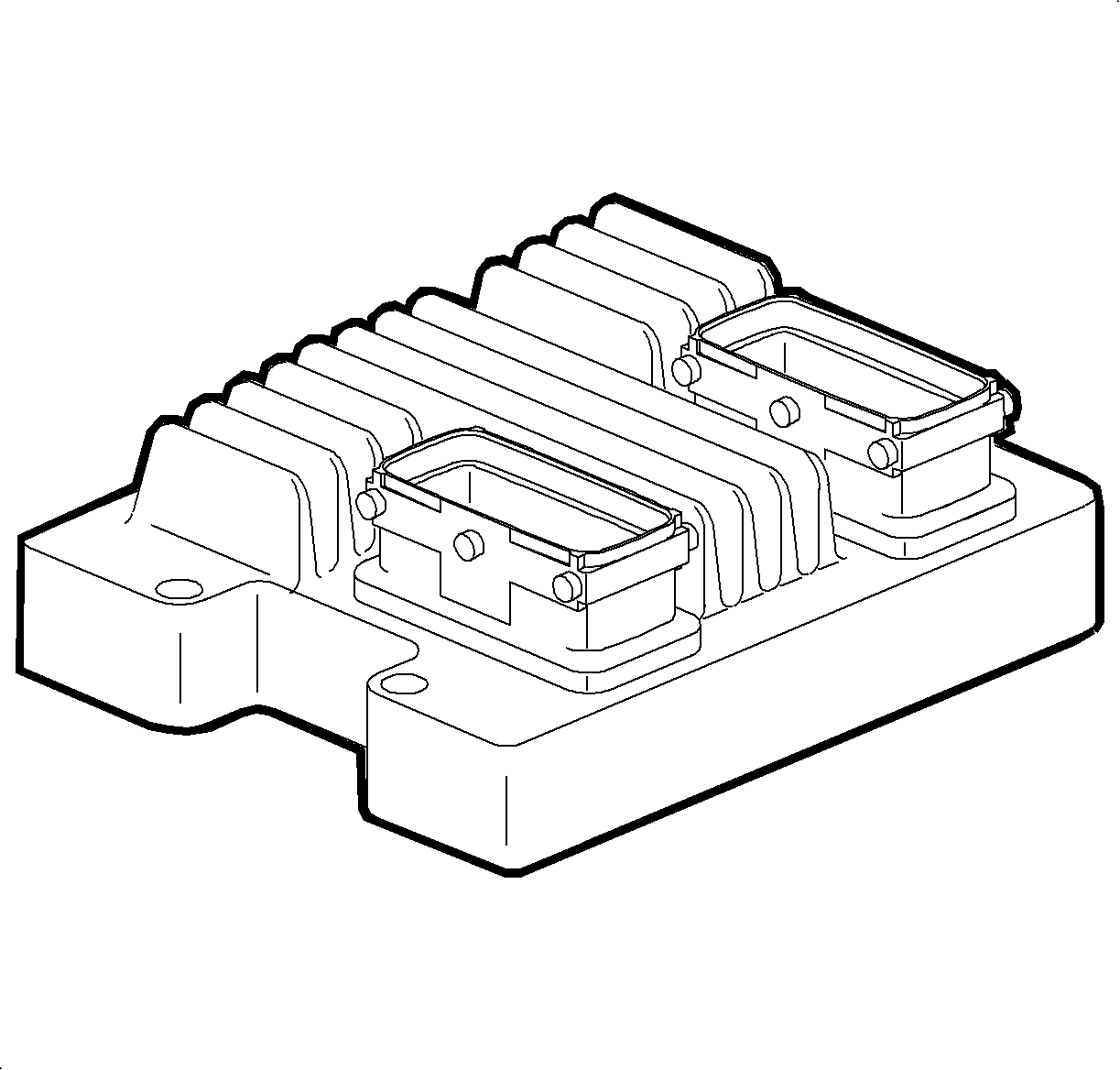
The PCM is secured to a bracket mounted to the front of dash near the right strut tower. The PCM uses one main microprocessor to control the engine and transaxle. The main function of the PCM is to control fuel and spark to the engine and to control transaxle shift points and shift feel. The PCM also controls:
| • | A/C relay |
| • | Cooling fans via a 2-wire logic circuit to the cooling fan control module |
| • | Cruise control (if equipped) enable |
| • | Generator L-terminal voltage (needed for charging) |
The PCM sends messages to the BCM or I/P cluster over the Class II link to control the:
| • | Coolant temp gauge |
| • | Fuel gauge |
| • | Change Oil Soon telltale |
| • | Charge telltale |
| • | Coolant Temperature telltale |
| • | Low Fuel telltale |
| • | Malfunction Indicator Lamp (MIL) |
| • | Oil Pressure telltale |
| • | Service telltale |
| • | Speedometer |
| • | Tachometer |
| • | Upshift telltale |
The PCM uses inputs from various sensors, processes the information and commands output devices. It performs diagnostics on both input and output circuits that have associated diagnostic trouble codes (DTCs). If a circuit fault exists when certain DTC parameters have been met, a DTC will be set and the PCM will store Freeze Frame/Failure Record information.
Stop Lamp Switch
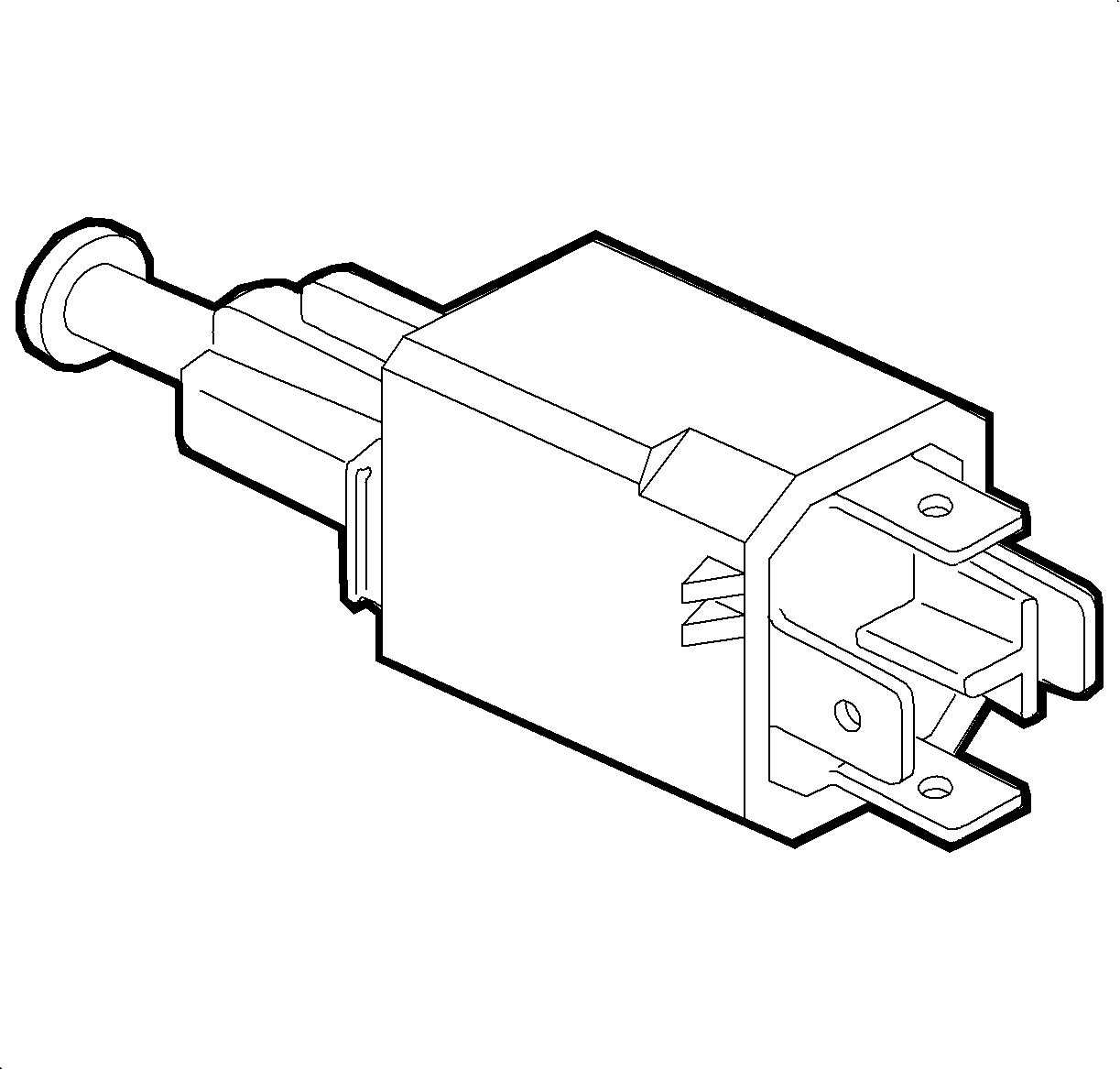
The stop lamp switch is located under the driver side I/P touching the brake pedal. The stop lamp switch is used to turn On the stop lamps and to serve as an input to the PCM (auto only) and cruise control module (if equipped). The stop lamp switch is normally closed with the switch out of the vehicle (brake pedal depressed, plunger released). Battery voltage is supplied to the cruise control module, PCM and stop lamps through the stop lamp switch whenever the brake pedal is depressed. When the brake pedal is released, the PCM / cruise control module inputs go low and the stop lamps turn Off. The stop lamp switch is also used by the PCM as an input for transaxle downshifting and TCC operation on automatic transaxles.
Throttle Position (TP) Sensor
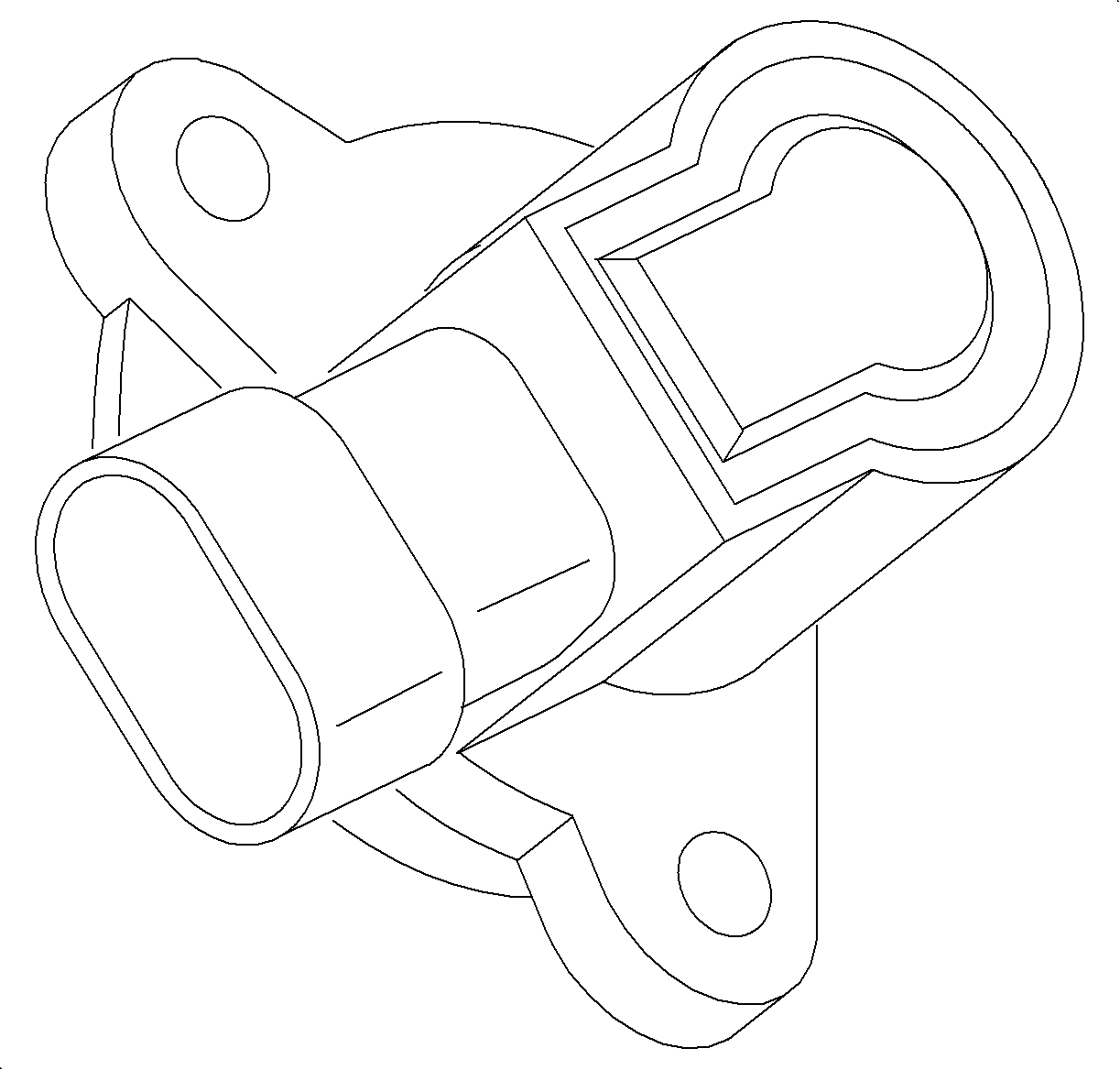
The TP sensor is located on the throttle body connected to the throttle plate shaft. The TP sensor is a potentiometer that varies resistance according to changes in throttle plate position. The PCM measures the signal voltage from the TP sensor, which is a reduced value of the PCM 5 volt reference. The voltage ranges from 0.35 (+/- 0.2) volts at 0% throttle plate opening to 4.65 volts at wide open throttle.
The TP sensor is used for:
| • | Clear flood mode |
| • | Deceleration enleanment |
| • | Calculation of engine load |
| • | IAC valve opening for throttle following |
| • | Idle determination |
| • | Transaxle shifting/TCC operation |
| • | Wide open throttle conditions |
Wheel Speed Signal Conditioner Module
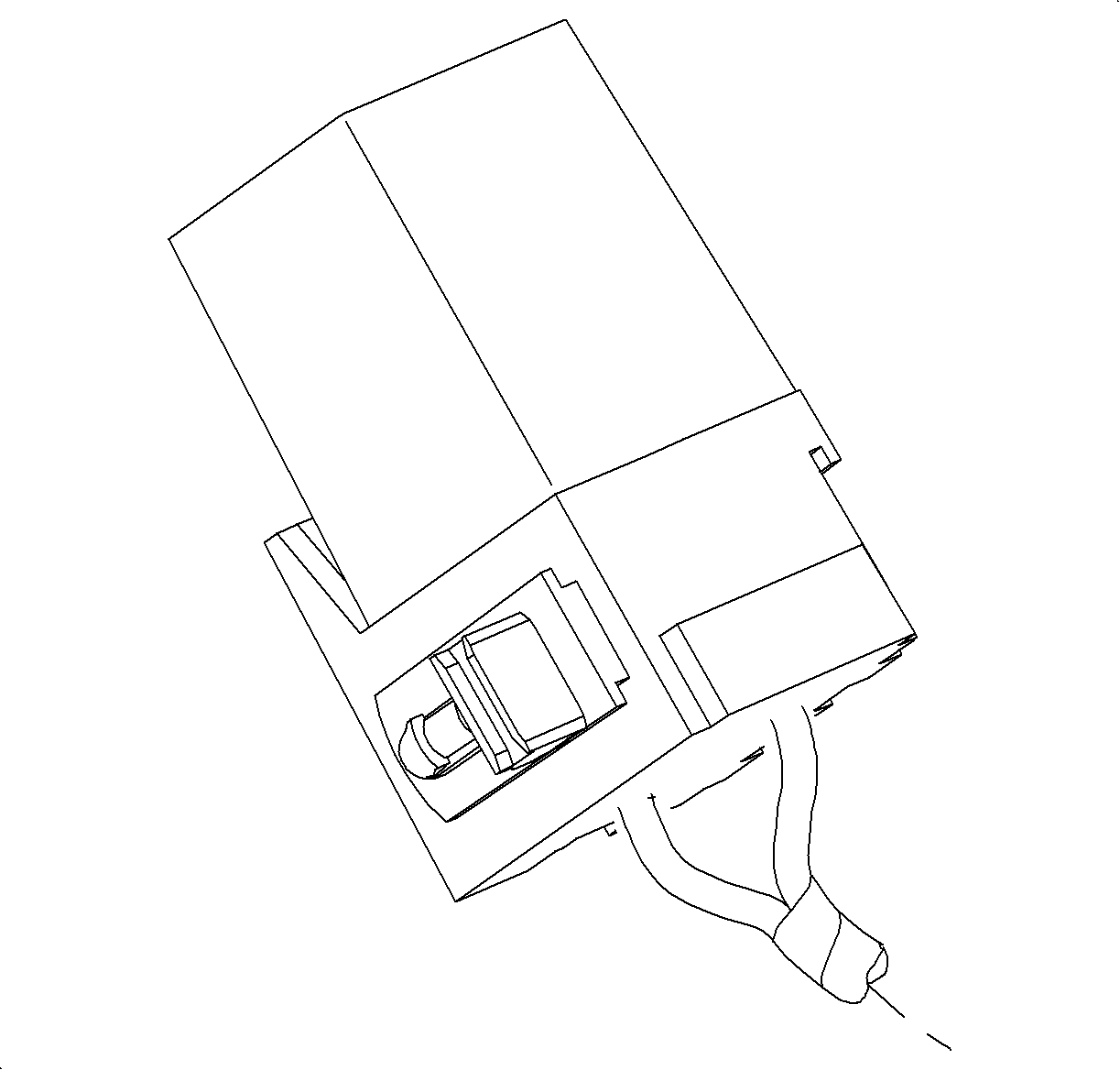
The wheel speed signal conditioner module for the L61 application is only equipped on 2000-2002 manual transaxle vehicles without antilock brakes. The wheel speed signal conditioner module is located under the driver side I/P, which is orange in color and similar dimensionally to a relay. The module harness is tied to the I/P harness.
Vehicle speed on manual transaxle non-ABS vehicles is received from the right front wheel speed sensor. The wheel speed signal conditioner module is used to convert the A/C voltage of the sensor to a square wave. This is accomplished by pulse width modulating the vehicle speed output circuit to ground, which is pulled up to 5 volts through resistance in the PCM. The PCM interprets the square wave input as vehicle speed.
